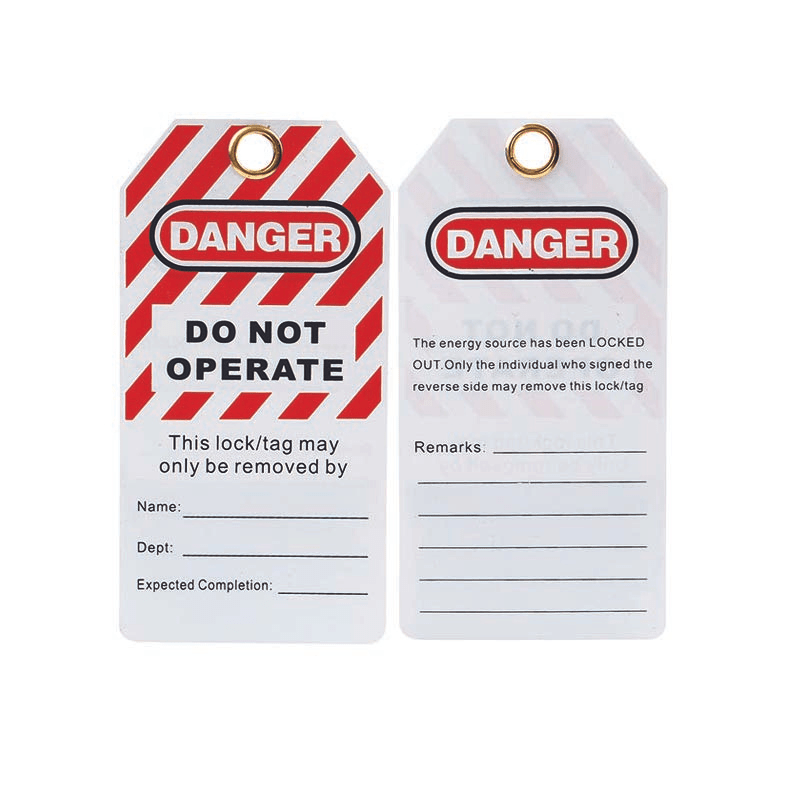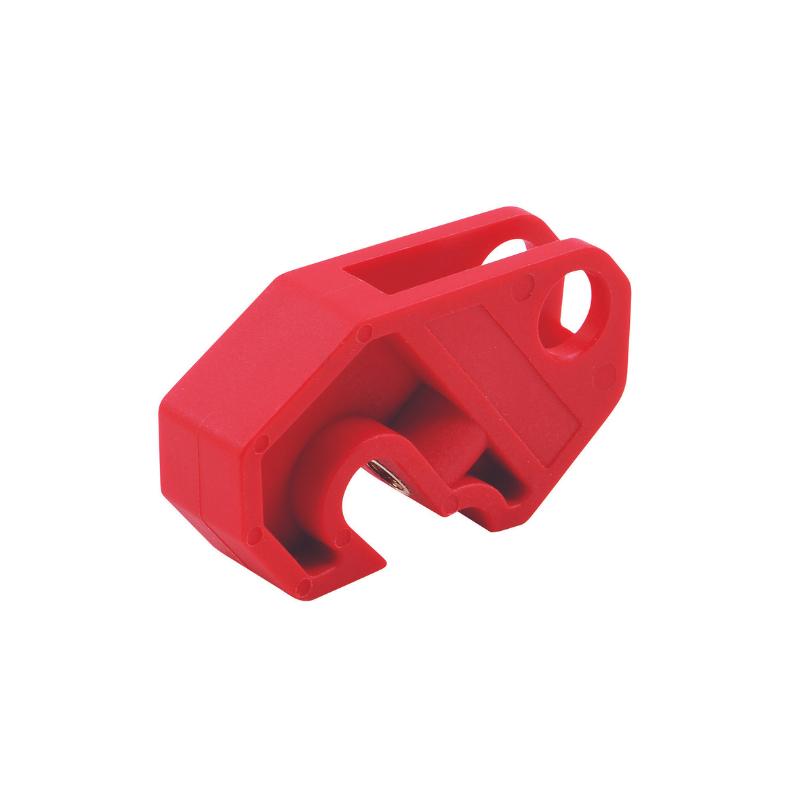Lockout Tagout (LOTO) procedures are essential safety measures used in industrial and commercial environments to prevent accidents and injuries caused by the unexpected release of hazardous energy during maintenance or repair activities. Conducting regular LOTO audits is crucial to ensure these procedures are effective, up-to-date, and compliant with safety regulations. This comprehensive guide will delve into the importance of LOTO audits, how to conduct them, and what to look for during the process. We will also highlight relevant products from The Lock Box that can aid in implementing and maintaining an effective LOTO program.
The Importance of LOTO Audits
LOTO audits play a vital role in ensuring the safety and effectiveness of LOTO procedures. These audits help identify potential weaknesses in the system, verify compliance with safety standards, and ensure that all employees are adequately trained. Regular audits contribute to a culture of safety, reducing the risk of accidents and improving overall workplace safety.
Key benefits of conducting LOTO audits include:
- Ensuring compliance with legal and regulatory requirements.
- Identifying gaps or weaknesses in LOTO procedures.
- Enhancing employee awareness and adherence to safety protocols.
- Reducing the risk of accidents and injuries.
- Improving overall operational efficiency and safety culture.
Steps to Conduct a LOTO Audit
1. Preparation and Planning
Before conducting a LOTO audit, it is essential to plan and prepare adequately. This involves:
- Defining Objectives: Clearly outline the goals of the audit. These may include assessing compliance with regulations, identifying procedural gaps, and evaluating the effectiveness of safety equipment.
- Gathering Documentation: Collect all relevant documents, including LOTO procedures, training records, equipment lists, and previous audit reports.
- Assembling an Audit Team: Form a team of qualified individuals with a thorough understanding of LOTO procedures and safety standards. This team may include safety managers, engineers, and trained LOTO personnel.
2. Reviewing LOTO Procedures and Policies
A detailed review of the existing LOTO procedures and policies is crucial. This step involves:
- Evaluating Written Procedures: Ensure that the LOTO procedures are clearly written, comprehensive, and accessible to all employees. They should cover all aspects of LOTO, including the identification of hazardous energy sources, isolation procedures, and verification processes.
- Assessing Compliance: Verify that the procedures comply with relevant regulations and standards, such as OSHA in the United States or EU directives in Europe. The Lock Box offers various lockout devices that can be referenced to ensure compliance with safety standards.
3. Inspecting LOTO Equipment
The effectiveness of LOTO procedures heavily relies on the proper functioning and availability of lockout devices and equipment. During the audit, inspect the following:
- Condition of Equipment: Check the condition of LOTO devices, such as padlocks, hasps, and lockboxes. Ensure they are in good working order and free from damage.
- Availability of Devices: Verify that an adequate number of LOTO devices are available and easily accessible to employees. The Lock Box’s Lockout Stations provide a centralized location for storing LOTO equipment, making it easier to manage and access these devices.
- Proper Labeling: Ensure that all LOTO devices are appropriately labeled with clear identification information, such as the name of the employee who applied the lock, the date, and the reason for the lockout.
4. Observing LOTO Procedures in Action
Observing the actual implementation of LOTO procedures is a critical part of the audit. This involves:
- Witnessing Lockout Procedures: Accompany employees during the lockout process to observe how procedures are followed. Pay attention to the accuracy and thoroughness of each step, from equipment shutdown to the application of lockout devices.
- Interviewing Employees: Speak with employees who perform LOTO procedures to gather insights into their understanding and execution of the process. Assess their knowledge of the procedures and their ability to identify and control hazardous energy sources.
5. Verifying Employee Training and Competence
Proper training is essential for ensuring that employees understand and correctly follow LOTO procedures. During the audit, evaluate:
- Training Records: Review training records to ensure that all employees who perform LOTO procedures have received appropriate training. Training should be comprehensive, covering the identification of hazardous energy sources, lockout procedures, and emergency response.
- Competence Testing: Conduct practical tests or simulations to assess employees’ competence in performing LOTO procedures. This can help identify any gaps in knowledge or skills that need to be addressed through additional training.
6. Assessing Program Effectiveness
Evaluate the overall effectiveness of the LOTO program by considering factors such as:
- Incident Records: Review records of any incidents or near-misses related to hazardous energy sources. Analyze these records to identify patterns or recurring issues that may indicate weaknesses in the LOTO program.
- Audit Findings: Summarize the findings of the audit, highlighting areas of compliance as well as areas that require improvement. Provide recommendations for addressing identified gaps and enhancing the overall effectiveness of the LOTO program.
7. Implementing Improvements and Follow-Up
The final step in the audit process involves implementing improvements based on the audit findings and conducting follow-up activities to ensure ongoing compliance and effectiveness.
- Action Plan: Develop a detailed action plan to address the recommendations from the audit. This plan should include specific actions, responsible parties, and timelines for implementation.
- Follow-Up Audits: Schedule regular follow-up audits to monitor the implementation of improvements and ensure that the LOTO program remains effective and compliant with safety standards.
What to Look for During a LOTO Audit
During a LOTO audit, there are several key areas and factors to focus on to ensure a comprehensive assessment of the LOTO program. Here are some critical aspects to consider:
Clarity and Accessibility of Procedures
Ensure that LOTO procedures are clearly written and easily accessible to all employees. Procedures should be comprehensive, covering all aspects of the LOTO process, and should be readily available in locations where LOTO activities are performed.
Adequacy and Condition of LOTO Equipment
Inspect the condition and availability of LOTO devices, such as padlocks, hasps, and lockout boxes. Verify that these devices are in good working order, appropriately labeled, and sufficient in quantity to meet the needs of the facility.
Compliance with Regulations and Standards
Ensure that the LOTO program complies with relevant safety regulations and standards. This includes verifying that procedures align with OSHA standards in the United States or EU directives in Europe. The Lock Box offers compliance-grade LOTO products that meet industry standards and can help ensure regulatory adherence.
Employee Training and Competence
Assess the effectiveness of employee training programs. Ensure that all employees who perform LOTO procedures have received comprehensive training and possess the necessary knowledge and skills to safely execute the procedures.
Proper Documentation and Record-Keeping
Verify that all LOTO activities are appropriately documented, including the application and removal of lockout devices, training records, and incident reports. Proper documentation is essential for tracking compliance and identifying areas for improvement.
Incident and Near-Miss Analysis
Review records of incidents and near-misses related to hazardous energy sources. Analyze these records to identify patterns or recurring issues that may indicate weaknesses in the LOTO program. Use this information to develop strategies for preventing future incidents.
Employee Awareness and Engagement
Gauge the level of employee awareness and engagement with the LOTO program. Ensure that employees understand the importance of LOTO procedures and are actively involved in maintaining a safe work environment.
Relevant Products from The Lock Box
The Lock Box offers a wide range of LOTO products that can enhance the effectiveness of your LOTO program and support your audit efforts. Here are some key products to consider:
-
LOTO Padlocks
- Available in various colors and materials, these padlocks provide secure and visible lockout points. Their durable construction ensures long-lasting performance in industrial environments.
-
LOTO Hasps
- These hasps allow multiple padlocks to be used on a single lockout point, ensuring that each authorized employee can apply their lock. This enhances accountability and compliance with LOTO procedures.
-
Lockout Boxes
- These group lockout boxes provide a central location for storing keys to locked-out equipment. This ensures that keys are only accessible to authorized personnel, enhancing security and control.
-
Lockout Stations
- These stations offer a convenient and organized way to store LOTO devices, making it easy for employees to access the necessary equipment. They are available in various sizes and configurations to suit different facility needs.
-
Valve Lockouts
- These devices are designed to lock out various types of valves, preventing accidental activation of machinery. They are available in different sizes and styles to accommodate different valve types.
-
Cable Lockouts
- These versatile devices can secure multiple energy sources and are ideal for locking out valves, electrical disconnects, and other equipment.
Conclusion
Regular Lockout Tagout (LOTO) audits are essential for maintaining a safe and compliant workplace. These audits help identify procedural gaps, ensure regulatory compliance, and enhance overall safety. By following a structured audit process—preparation, reviewing procedures, inspecting equipment, observing practices, verifying training, assessing effectiveness, and implementing improvements—you can significantly improve your LOTO program.
Key focus areas during a LOTO audit include procedure clarity, equipment condition, regulatory compliance, employee training, proper documentation, incident analysis, and employee awareness. Addressing these aspects ensures your LOTO program is effective and continuously improving.
The Lock Box offers a comprehensive range of LOTO products, such as padlocks, hasps, lockout boxes, lockout stations, valve lockouts, and cable lockouts, to support your safety efforts. Investing in these high-quality products and conducting thorough audits will foster a culture of safety, reduce accident risks, and ensure regulatory compliance.



